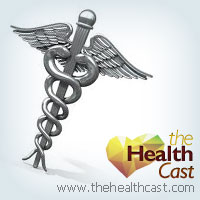
Here are some of the latest health and medical news developments, compiled by the editors of HealthDay:
Cough Capsules Pose Risks to Young Children: FDA
The cough capsule medication Tessalon (benzonatate), which has a candy-like appearance, can result in serious side effects and even death if swallowed by children younger than 10 years old, the U.S. Food and Drug Administration said Tuesday.
Tessalon, approved by the FDA to treat coughs in patients older than 10, may attract younger children because of the drug’s candy-like appearance — a round, liquid-filled gelatin capsule. The safety of Tessalon has not been studied in children younger than 10, the agency said.
“Benzonatate should be kept in a child-resistant container and stored out of reach of children,” Carol Holquist, director of FDA’s Division of Medication Error Prevention and Analysis, said in an agency news release. “The FDA encourages health-care professionals to talk with their patients and those caring for children about the risk of accidental ingestion or overdose.”
The FDA said a review of its database from 1982 through May 2010 revealed seven cases of accidental ingestion of Tessalon in children younger than 10. Five of the cases resulted in death in children ages 2 years and younger. Overdoses in children younger than 2 years have been reported with just one or two capsules, the agency said.
Reactions can include cardiac arrest, coma, and convulsion, and signs and symptoms of an overdose can occur within 15-20 minutes of ingestion, the FDA said. The agency said it was adding a new “warning and precaution section to the drug’s label.
Consumers and health-care professionals are urged to report adverse side effects or medication errors from the use of Tessalon to the FDA’s MedWatch Adverse Event Reporting program at www.fda.gov/MedWatch or by calling 800-332-1088.
—–
More Money Needed for Anti-Malaria Program: WHO
A funding shortfall threatens to reverse the achievements of a huge malaria control program that has eradicated the disease in Morocco and Turkmenistan and reduced infections across Africa, according to the World Health Organization.
WHO Director-General Margaret Chan told reporters in Geneva that the U.N.’s anti-malaria program has contributed to a greater than 50 percent decrease in malaria cases in 11 African countries and in two-thirds of the 56 malaria-endemic nations outside of Africa, the Associated Press reported.
Worlwide, the number of malaria infections fell from 233 million in 2000 to 225 million in 2009, despite increasing populations in poor nations. Malaria deaths dropped from 985,000 in 2000 to 781,000 in 2009.
This year, the anti-malaria program received $1.8 billion in funding, but the WHO estimates $6 billion a year is needed to achieve the goal of eliminating malaria deaths worldwide by 2015, the AP reported.
—–
FDA Reexamines Safety of Amalgam Dental Fillings
The U.S. Food and Drug Administration is rehearing evidence about the safety of amalgam dental fillings, less than 18 months after the agency declared the so-called silver fillings safe.
The amalgam — which contains about 50 percent liquid mercury in a mix of powdered copper, tin and silver — is safe, effective and one of the most inexpensive dental products on the market, according to dentists’ groups, NewsDay reported.
But four consumer advocacy organizations challenged the FDA’s March 2009 ruling about amalgam, which has been used in the United States and elsewhere for more than 150 years. The critics point to new studies that suggest amalgam fillings may be associated with neurological conditions and even Alzheimer’s disease in some people.
An FDA panel of experts met Tuesday and Wednesday to consider evidence from several scientific studies. They also heard from people who say they’ve been harmed by the fillings, NewsDay reported.
Some countries have banned amalgam fillings and others have restricted its use.
—–
Study Links Thousands of Deaths to Nuclear Bomb Test Fallout
Thousands of people worldwide may have been killed by radiation from nuclear bomb test fallout, suggests a new study.
Researchers at the nonprofit Radiation and Public Health Project in New York City examined baby teeth collected from males who grew up in the St. Louis area in the early 1960s. Levels of radioactive strontium were twice as high in teeth taken from those who died of cancer by middle age, compared with those who are still alive, The New York Times reported.
During the early 1960s, the United States and Soviet Union were conducting nuclear bomb tests in the atmosphere. These findings suggest that the number of deaths from bomb fallout worldwide are in the “many thousands,” said study authors Joseph J. Mangano and Dr. Janette D. Sherman.
The study was published Dec. 1 in The International Journal of Health Services.
The findings should be interpreted with caution, said one expert.
“It sounds like the best you could do is say this is an association. An association is not necessarily causative,” Kevin D. Crowley, senior board director of the Nuclear and Radiation Studies Board at the National Research Council, told The Times.
—–
New Strategy for Patients With Multiple Chronic Conditions: HHS
A new public-private collaboration to deal with the increasing number of Americans with chronic health problems was announced Tuesday by the Department of Health and Human Services.
In the United States, more than one-quarter of all people and two out of three older adults have multiple chronic conditions. Treatment for these patients accounts for 66 percent of the nation’s health care budget. These numbers are expected to rise as the population ages.
As a patient’s number of chronic conditions increases, so do the risks of complications such as adverse drug events, unnecessary hospitalizations and confusion caused by conflicting medical advice, said the HHS.
The new Strategic Framework on Multiple Chronic Conditions was created to reduce the risks of complications and improve the overall health of patients with multiple chronic conditions.
It aims to do this by: promoting change in the health care system; providing more information and better tools to help health professionals and patients learn how to better coordinate and manage care: and by supporting research to improve oversight and care of patients.

